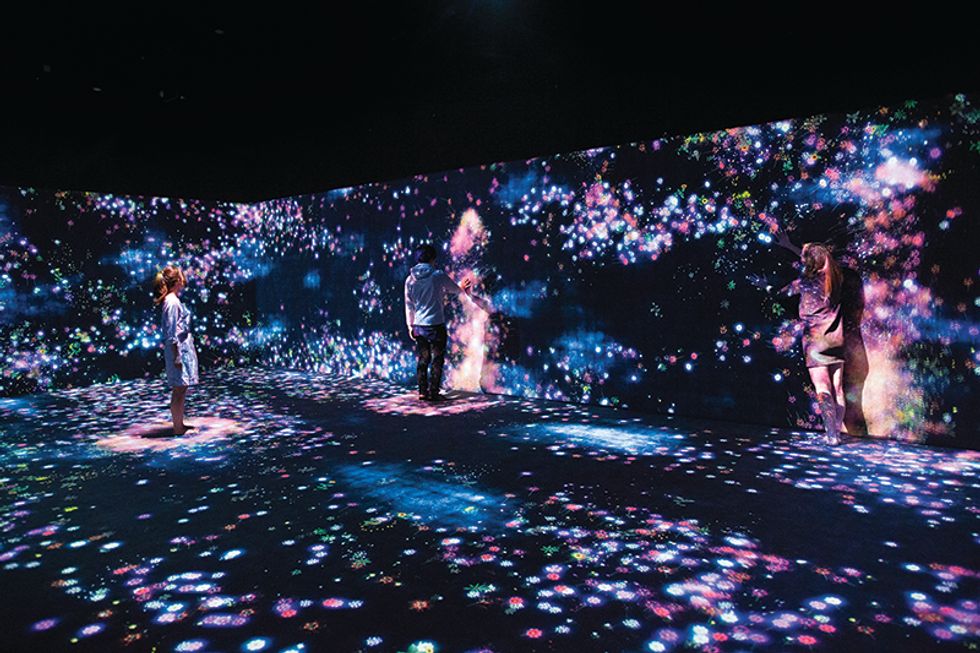The talented cast also includes baritone Alessandro Corbelli, a revered Rossini specialist, as Don Magnifico, tenor Jack Swanson as Prince Ramiro, baritone Iurii Samoilov in his company debut as the prince’s valet Dandini, and bass-baritone Cory McGee as the philosopher Alidoro.
On Nov. 9, as part of the HGO’s inaugural Family Day, kids and parents are invited to enjoy a special 90-minute version of the opera directed by Leonard and tailored for young audiences. The family-friendly production features low lighting and flexible entry and re-entry, and stars mezzo-soprano Deepa Johnny in her company debut as Angelina.
 Isabel Leonard (photo by Michael Thomas)
Isabel Leonard (photo by Michael Thomas)
On the surface, Cinderella may be frothy, but it is also incredibly challenging to sing, and in rehearsals, Leonard has to use two very different voices: one for singing, and one for speaking to and communicating with the cast. “It’s a different kind of vocal engagement to speak and be a leader, versus staying in a ‘singing’ state, which is also taxing,” says Leonard. “I’m generally exhausted! But it’s so much fun to direct, and I wouldn’t have it any other way.”
With still so few women directing opera, or for that matter, conducting or taking the lead in other creative roles, the HGO has addressed this disparity in recent productions, including Intelligence, directed by Jawole Willa Jo Zollar, and featuring dancers from Zollar’s company Urban Bush Women; and The Wreckers, directed by Louisa Muller. While Leonard believes anyone, regardless of gender, can bring a fresh perspective to an opera’s narrative, she confirms she has attempted to bring Cinderella into a more “equal zone.”
“It is challenging to recreate these existing versions of love stories that are already dipped in old tropes and written by men,” says Leonard, who is mother to a teenage son. “Thankfully, this English version has a little more room to expand since we are able to make cuts and write some dialogue.” (Joan Font returns to HGO to direct the “grown up” performances of Cinderella, the same production he directed for the company in 2007, and Lorenzo Passerini makes his company debut conducting.)
Other activities planned for Family Day before the performance and during intermission include a Craft-a-Rat station, where kids can make masks similar to the ones the rats in the show wear. (Fair warning, there are cute, but life-size rats in the production!) Kids will also have the opportunity to decorate a tiara or crown, visit a glitter bar and a princess photo station (probably in that order), enjoy story times and mobile book checkouts courtesy of Harris County Public Library, and visit an instrument petting zoo.
While the “adult” performances of Cinderella are a must-see for those new to opera or thoroughly familiar with the form, the Family Day production is designed to appeal to kids of all ages.
“Children are the best audiences. In fact, anyone who allows their imagination to run wild is the best!” says Leonard. “I hope for lots of giggles, laughter, applause, and focused engagement throughout the entire piece.”
 Leonard in rehearsal (photo by Michael Bishop)
Leonard in rehearsal (photo by Michael Bishop)


 Isabel Leonard (photo by Michael Thomas)
Isabel Leonard (photo by Michael Thomas) Leonard in rehearsal (photo by Michael Bishop)
Leonard in rehearsal (photo by Michael Bishop) Organist Brett Miller
Organist Brett Miller